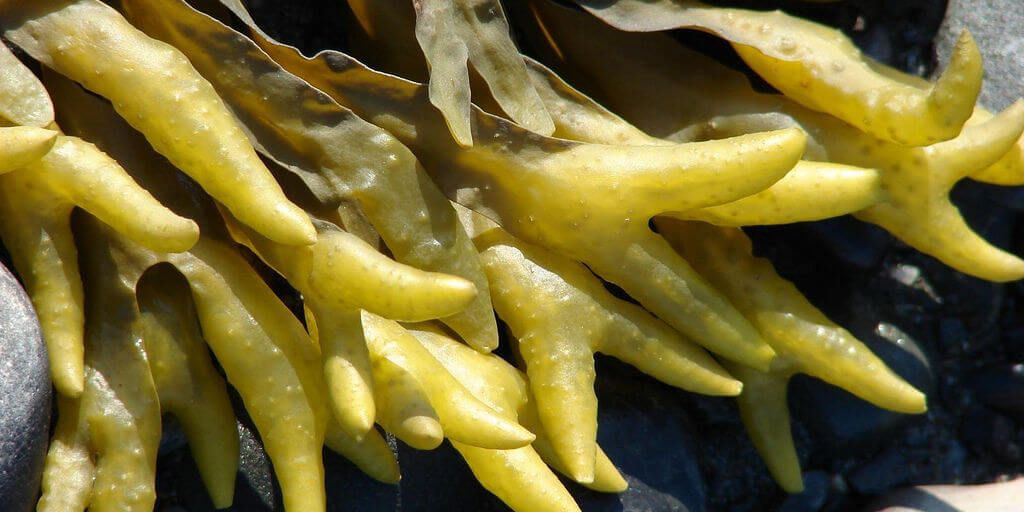Bladderwrack, (Fucus vesiculosus), is in the family of brown seaweeds that includes rockweed, sugar kelp and Alaria. Bladderwrack has been used medicinally for centuries. It is called Bladderwrack because of the air pockets in its leaves which look like small bladders.
The word Fucus is thought to be from the Greek work phykos, which means algae, and the word vesiculosus, which comes from the Latin word vesicula, which refers to blisters. These air pockets in the Bladderwrack fronds help the seaweed float.
Bladderwrack Habitat
Bladderwrack is a cold to temperate water species that grows in the ocean on the Pacific and North Atlantic Coasts, the North Sea, and the western Baltic Sea. Mature plants are usually olive-green but can range from yellow to greenish-yellow to dark brown.
Bladderwrack Health Benefits
The main use of Bladderwrack has been for the stimulation of the thyroid gland as a treatment for obesity and cellulite. The high iodine content of the herb stimulates thyroid function which boosts metabolism.
The main phyto-therapeutic use of Bladderwrack is during debility and convalescence, and also to re-mineralise the body.
Bladderwrack has a reputation in the relief of rheumatism and rheumatoid arthritis and may be used both internally and as an external application for inflamed joints.
Bladderwrack also appears to assist in the problem of lipid balance associated with obesity, and where obesity is associated with thyroid dysfunction, this herb may help to reduce excess weight.
Bladderwrack is a rich source of vitamins & minerals
Bladderwrack is rich in; iodine, calcium, magnesium, potassium, sodium, sulphur, silicon, iron and high in some B-complex vitamins. It contains moderate amounts of; phosphorus, selenium, manganese and zinc and small amounts of vitamin A, vitamin C, vitamin E and vitamin K. It is rich in algin and mannitol, carotene and zeaxanthin, with traces of bromine.
Shopping
| Visit the new SHOPPING page for a wide selection of amazing products! |
Always take care when taking herbs and Read Our Disclaimer.
Bladderwrack Herb Notes / Side Effects
Because of the high iodine content Bladderwrack should be used according to the directions and anyone with thyroid problems should consult their doctor. Start with 1 to 2 capsules per day.
Avoid in overactive thyroid conditions such as hyperthyroidism or cardiac problems and/or during pregnancy and breast-feeding. Not recommended for children under 5.
Latin Name
Fucus vesiculosis
Common Names
Bladderwrack, paddy tang, black tang, swine tang, rockweed, sea grapes, bladder fucus, sea oak, cut weed, dyers fucus, red fucus, rock wrack, seaweed.
Bladderwrack Uses
Nourishing and soothing, stimulates the thyroid gland, anti-hypothyroid, thyro-active, thyroid tonic so can be used for lymphadenoid goitre, anti-obesity, anti-rheumatic, demulcent, gentle metabolic stimulant, nutritive, adaptogen, myxoedema, anti-inflammatory, obesity with tiredness and dry skin. Cellulite, chronic dry skin and stubborn constipation. Regular use delays the progress of rheumatoid arthritis and hardening of the arteries. A good tonic for old age. For children with slow mental and physical development.


Leave a Reply